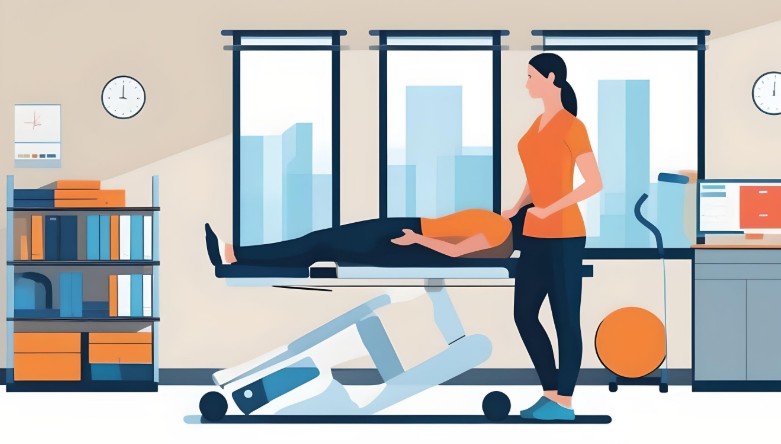Successful Strategies for Accelerating Injury Recovery Safely
Successful Strategies for Accelerating Injury Recovery Safely
Ever wondered how to recover from an injury faster?
It’s pretty common in fact. Every year in the United States, 8.6 million people are injured in sports and recreational activities. In fact…here’s the catch…
The majority of people don’t know what methods to use to speed up their recovery safely. People either start moving and exercising before their body is ready, or they sit on the couch too long waiting for their body to feel 100% again.
Here’s the deal…
Injury recovery doesn’t have to take forever. When you know how, the body has the ability to recover more quickly than you might think — all while minimizing your risk of further injury.
Let’s take a closer look at how to recover from an injury in the fastest way possible without the side effects of re-injury:
- How Long Does Recovery Take In The First Place?
- Finding the Right Amount of Rest vs Movement For Recovery
- The Importance of Physical Therapy to Your Recovery Plan
- How Nutrition Plays a Role In Injury Recovery
- Advanced Recovery Methods That Actually Work
- The Mental Aspect of Recovering From An Injury
How Long Does Recovery Take In The First Place?
It depends on the injury of course. Recovery times can vary greatly based on injury type and severity.
The median time to recovery for patients with a mild traumatic brain injury is 14 days, or 45% of people with this condition, with 77% of patients taking up to 4 weeks to return to baseline health. But here’s what most people don’t realize…
Injury Recovery Time Depends on Several Factors
- Severity of injury
- Age and overall health
- Quality of treatment received
- Compliance with recommended rehab plan
The good news is, with proper care and attention, most minor injuries will heal within weeks. More serious injuries can take months to fully recover, but using the right methods can make a huge difference.

Finding the Right Amount of Rest vs Movement For Recovery
Here’s something you may not know…
Resting all day is not always the best approach. In fact, too much inactivity can sometimes slow down the recovery process.
Modern approaches to injury recovery emphasize active recovery — gentle movement that promotes healing without straining the injury. The key here is circulation:
Blood flow to an injured area delivers oxygen and nutrients that aid in tissue repair.
But of course, here’s the issue…
Too much too soon can cause re-injury. The challenge is finding the balance between rest and movement for optimal recovery.
The Importance of Physical Therapy to Your Recovery Plan
Physical therapy is one of the best ways to recover from an injury.
Why? A good physical therapist can develop a customized plan that:
- Eases pain
- Gradually restores range of motion
- Builds strength in injured tissues
- Helps prevent re-injury
Sports and recreation related injuries increased 17% in 2024, with 4.4 million people ending up in an emergency department to be treated for these conditions. Sports and recreational injuries were the #5 leading cause of ER visits in 2024. Many of these conditions could have been avoided or lessened with proper rehabilitation.
The best part? Physical therapy is effective for just about any kind of injury, whether it’s a sprain, strain, or even post-surgery recovery.
How Nutrition Plays a Role In Injury Recovery
Did you know this about eating and recovering?
The right foods in your body directly impact how well your body heals. Good nutrition gives the body the building blocks it needs for tissue repair and immune support.
Key nutrients for recovery:
- Protein — for building and repairing muscle
- Vitamin C — needed for collagen production
- Zinc — important for immune system and wound healing
- Omega-3 fatty acids — reduce inflammation
The truth is proper nutrition can have a dramatic impact on recovery time. Most people only focus on rest and exercise, while neglecting nutrition.
Advanced Recovery Methods That Actually Work
Science has progressed leaps and bounds in recent years on the topic of recovery.
Hyperbaric oxygen therapy statistics show great promise for speeding up tissue repair. Hyperbaric and advanced recovery methods work by flooding injured tissues with concentrated oxygen.
But the thing is…
Not all advanced treatments work for every injury. Some therapies are more effective for certain types of tissue or injury severity.
Other methods that have shown to be beneficial include:
- Cold therapy to reduce inflammation and swelling
- Compression therapy to improve circulation
- Electrical stimulation to activate muscle tissue
- Laser therapy to promote cellular repair
The key is finding a doctor or clinic who can properly advise which treatments will help an injury.
The Mental Aspect of Recovering From An Injury
Want to know something else that’s often overlooked in recovery?
Injury healing is not only physical, but also psychological.
Injuries take a mental toll, leading to:
- Frustration at lost time
- Fear of re-injury
- Anxiety over returning to normal activities
- Depression from physical limitations
A review of the psychological factors in rehabilitation confirms the impact of an athlete’s psychological state on their recovery. A negative mental state can create challenges to athletes returning to peak performance even when they are physically ready.

Here are some mental strategies to support recovery:
Set realistic goals and celebrate small victories along the way. Stay connected with support networks, whether friends, family or support groups. Focus on what is in your control rather than dwelling on setbacks.
Keep in mind, recovery is a process that takes time and patience.
Recovery Can Be Difficultht
Safe injury recovery is not something that only involves the physical aspects of the body, but a number of components working together.
The fastest recoveries occur when multiple approaches are used together:
- Understanding realistic recovery timelines prevents frustration
- Balancing rest and movement for active recovery
- Following a physical therapy plan for professional rehab
- Eating the right foods for recovery nutrition
- Utilizing advanced methods for accelerated healing
- Supporting mental readiness during the healing process
Don’t rush the process, but don’t delay movement too long either. Consult with a doctor or clinic to find a personalized plan that will safely build the body back to full strength.
By investing in proper recovery today, you prevent chronic issues down the road. And that’s what matters most.

